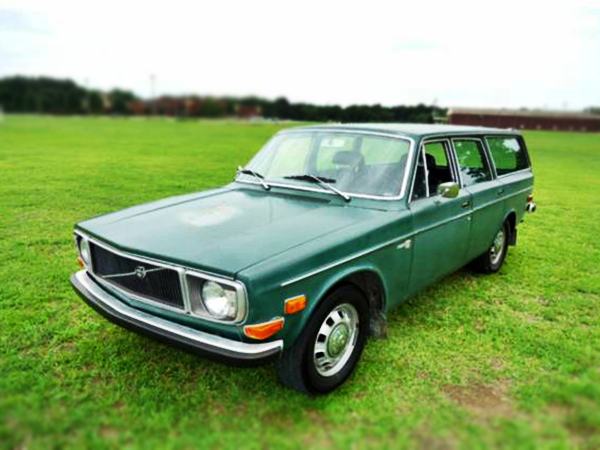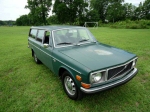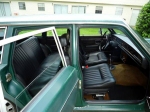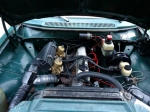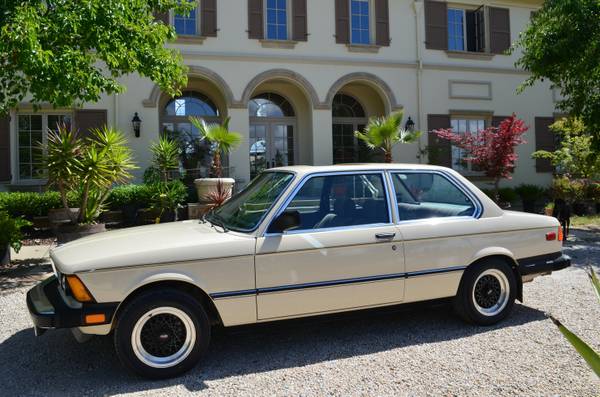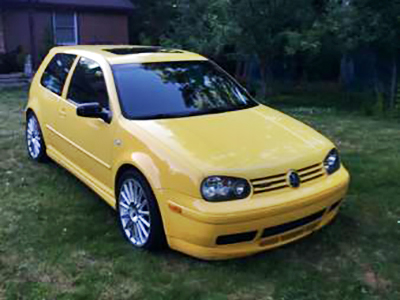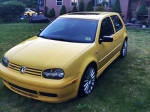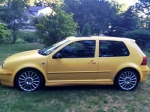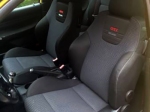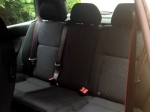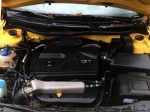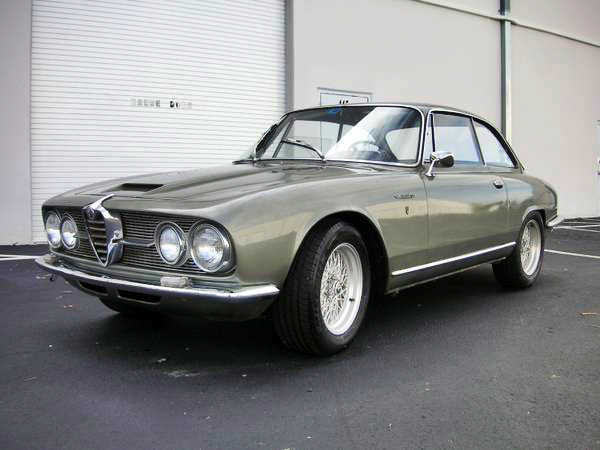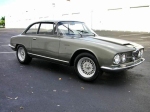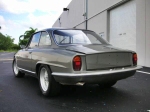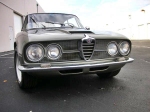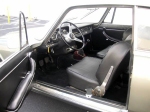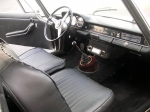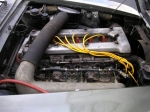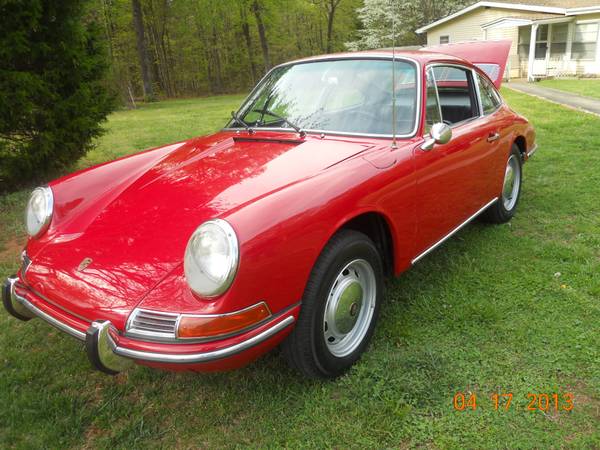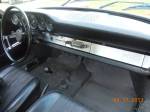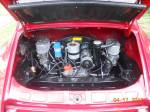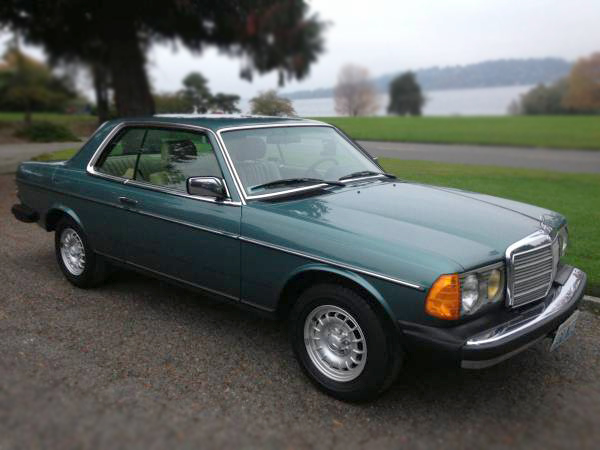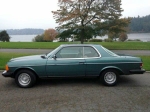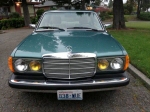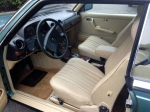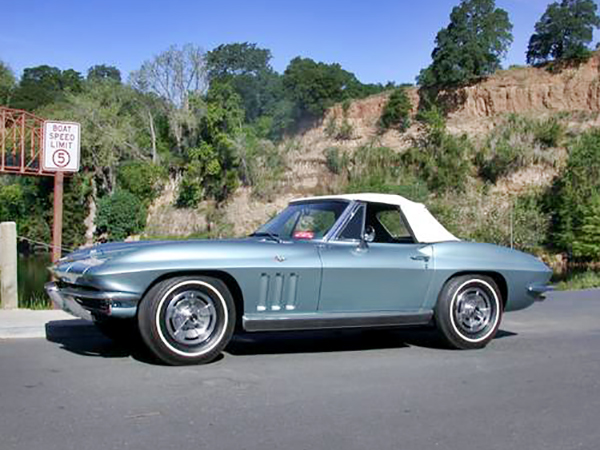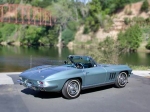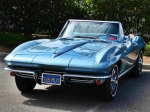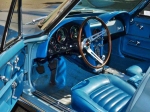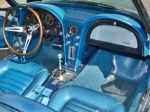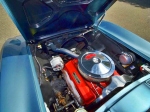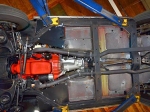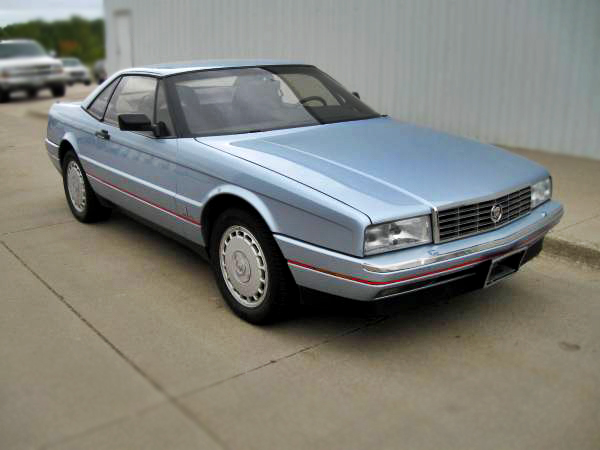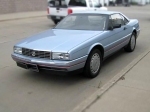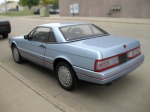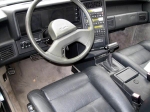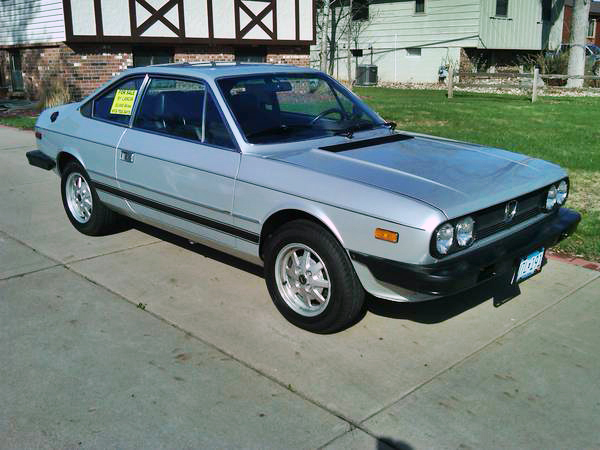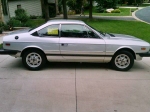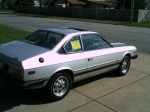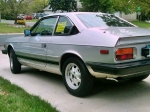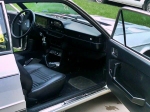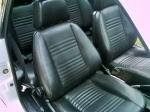When it was time to replace Volvo’s classic rounded shapes of its Amazon and earlier PV cars, they thought out of the box. Or rather, they created the box, which would become a Volvo hallmark for the next 40 years. The boxiest of these was its wagon form, the 145. Like the 122S Wagon which preceded it, it was immediately popular for its build quality, safety and cavernous cargo room. In 1971, the 145 was further adored for having a new fuel-injected motor providing a very respectable 135 hp as well as a 4-speed gearbox, now with electronic overdrive. Volvo 145s don’t come on the market very often and those that do are mostly a testament to Volvo’s legendary durability, logging hundreds of thousands of miles and looking the part. This 145 appears to be a remarkably well preserved 90,000-mile example showing some patina in the paint and a leather interior that has been under seat covers for most of its life, thus looking practically new. A fair amount of recent mechanical attention has been given to it as well, making for what could be a very enjoyable car for a very long time. 145s and 245s have long been a favorite of the “hooning” set, but this one deserves to receive the careful preservation it’s been accustomed to. Priced at $4,500, it is a rather attractive package. Or box. Find it here on AutoTrader Classics in Gadsen AL.
Tag: low miles (Page 2 of 5)
Described as a survivor, this 1981 BMW 320i presents very well in its excellent original paint and upholstery. Under one owner from new until 2013, with excellent records, it appears to be have been impeccably maintained as well. For whatever reason, the E21 3 Series (the first to have been officially called a 3) have been skipped over by most enthusiasts who either seek the E10 2002s or its successor, the E30. This may simply be due to the era, when manufacturers were burdened by emissions and safety regulations before figuring out an engineering solution whereby they could comply without compromise. This impression is further jaded by the later cars (1980-83) receiving a smaller 1.8 liter engine (US opting to keep the 320 moniker as it was the only E21 available here). While the 1.8 is somewhat less powerful, with just over 100 hp, the later cars also benefitted greatly from chassis refinements that shed about 80 kilos. The result was a more spry performer, better in fact than the highly revered, top-of-the-line 2002tii which came before it. The 320i was also a much more solid feeling car than the 2002, with smooth, precise shift linkages and a 50/50 weight distribution (100 kg more than the 2002) that gave the car a more firmly planted rear end. This particular 320i is also nicely optioned with air conditioning (not working), manual sunroof and AM/FM. It has its original toolkit, manuals and sales documentation as well as a stack of receipts. With the values of outstanding-example 320i’s poised to leap, there aren’t many left as original and tidy as this one. Find it here on Craigslist in Pleasonton CA priced to sell at $7,900.
Marking 20 years since the U.S. launch of the world’s most successful “hot hatch”—and the one that’s credited with creating the category—Volkswagen of America celebrated the occasion with the GTI 20th Anniversary. Of the 4,200 made, about a quarter were in Imola Yellow, nodding to Ferrari’s Giallo Fly (Black Pearl and Jazz Blue were the other two available colors). Despite its limited production, not much reverie was given to keeping them pure and most eventually ended up glommed among the other MK 4 Golfs that are highly coveted by the tuner set. Some were genuinely elevated to astonishing feats far beyond what anyone would imagine possible from what is essentially a people’s car. Others are nothing short of abominations. Few were left untouched. This is an Imola Yellow 20th that has remained mostly pure, with its turbo-back exhaust the only modification. And that is a good thing. With only 48,000 miles, it gives its next owner the option a more or less blank canvas upon which to either tune or preserve. It is otherwise described as “basically mint” and does appear to be exceptional clean and well cared for. Find it here on Craigslist in Allentown PA for $11,000 or best offer.
After a long period of hesitation, the market for ‘60s Alfas has become hot in the past six months. Most of the attention is directed toward the Type 101 Giulia and Giuliettas, however the touring cars are seeing the lift as well. While obscure in comparison, fans of Fellini and Rosselini films may recognize the 2600 Sprint as the car of choice for the Caribinieri. It’s not hard to see why. The 145-hp six cylinder was more than capable of a spirited chase along twisty country roads, whist offering its drivers and occasional occupants ample comfort to enjoy the scenery. Its styling was by Bertone, but more significantly it was the first project under the Carrozzeria’s new head of design, Giorgetto Giugiaro. Its shape went on to influence dozens of other cars from Fiat, Lancia, Opel, and more. Giugiaro, meanwhile, would go on to create some of the world’s most memorable designs like the Lotus Esprit, Volkswagen Golf and Scirocco, and yes, the Yugo. An Alfa Romeo 2600 Sprint rarely comes on the market and when it does it’s typically offered by one of the high-end collector car suction. This particular 2600 is offered by private party. Seller describes it as a good driver-quality but that may be underselling it. There is no evidence of any rust and interior appears to be tidy and original, except for an older recovering of the seats. The car will need a proper paint job and new headliner to be show quality, but as is, appears to be a very presentable example. Find it here on Craigslist in Miami FL for a reasonable $25,000.
As it did when it was introduced in 1965, the 912 offers much of the same joys of owning a classic Porsche at prices that are still attainable. With their iconic looks, nimble handling and go-the-distance fuel economy, the Porsche 912 is a Cinderella story in the making. The 912 presented here has had a ground-up restoration. Beginning with an original 55,000-mile car, everything but the clock rebuilt or replaced with NOS. It is said to be numbers matching with its original 2.0-litre motor professionally rebuilt, as was the transaxle. It wears what appears to be an excellent bare-metal repaint in its original Polo Red. Interior looks very tidy and has its original radio with new (expensive) door cards, headliner, carpeting and more. As short-wheelbase 911 prices soar out of reach, a 912 for under $40,000 is especially attractive. Find it here on Craigslist in Iron Station NC for a bargain $38,000.
Imagine walking into a Mercedes-Benz showroom in 1985. There sits before you a handsome coupé with a turbo-diesel motor in the popular-at-the-time 877 Blue-Green Metallic over Beige Tex. By now, the stalwart 3-litre five cylinder diesel motor has already gained legendary status, but placed in this two-door pillarless variant of the W123 chassis, it takes on a completely new purpose. This, in its turbo-charged form, combined with the sporty aesthetic, is the world’s first diesel-powered performance touring 2+2. This is the same basic motor that in 1978 broke nine different diesel and gas speed records, averaging nearly 15 MPG at over 195 MPH through 12 hours. Furthermore, the 300 CD was so impeccably engineered, that in its styling, it lost nothing in structural integrity, its Mercedes-Benzness. Naturally, you’re sold. Jump ahead to 2014 and after 29 years as the sole owner, it’s time to sell. Despite limited production, a 300 CD coming on the market is nothing extraordinary. As the designers and engineers intended, most are still on the road and somehow managed to skip over the period where they looked tired, such that they seamlessly went from modern to classic. A 300 CD, like any of the Mercedes-Benz diesels, can clock literally millions of miles, thus it’s certainly not extraordinary to find nice examples with 250,000 miles or more. What is extraordinary is that the very same Blue-Green over Beige 300CD that lured its owner on that showroom in 1985 looks exactly the same as it did then. With only 34,000 miles, it’s not hard to imagine why. Original paint appears flawless as does the interior. Even the floor mats look like they’ve had nary a soled shoe placed upon them. Everything including the original Becker radio and all power accessories, such as windows and sunroof, are said to be working perfectly.The owner states that it has been meticulously maintained and there’s surely no reason to doubt that. The attention to detail in its preservation is evident in every sense, including all its original documents, such as the 1985 brochure, from the original sale. Perfection has its price with this one priced double of what a 100,000-mile example would go for and several thousand over Hagerty’s high value. This however, is clearly one of those that is hors categorie. Its condition and mileage might be better compared to a late-model E or CLK Class coupé, except that this, in 1985, was the last two-door diesel-powered Mercedes-Benz we would see on these shores. Hors categorie indeed. Find it here on Craigslist in Seattle WA for $22,500.
At any given collector car auction, a mid-year Corvette (1963-1967) is a perennial favorite, gaining acceptability even amongst the most elite of international collectors. Playing on Detroit’s strength of cubic inches and horsepower, the well-optioned big-block 427s with excellent provenance tend to garner the most attention, deservedly so. Perhaps less in their shadow as in their aura, other Corvettes have less of an opportunity to shine, but are gems nonetheless. This is an outstanding example of that. This one comes from 1966 and has the smallest and least powerful motor offered that year. In saying that, we’re still talking 300 horsepower in a car weighing 200 pounds less than its 427 counterpart. That aside, this is a one-owner Corvette with an impeccable detailed and documented history which includes its original sales receipt, every service receipt including oil changes, and all registrations, in addition to all original books. The car underwent a frame-on restoration in 2010 and appears to have been done to a very high standard as evidenced by its NCRS Top-Flite award the following year. The 1966-only Trophy Blue over the 414 blue interior and white top (Trophy Blue hardtop included) is an alluring and sought-after combination. The car is also decently optioned with original AM/FM radio, power steering, and teak steering wheel. It is, on paper, a worthy investment. Its story, provided by the original owner, through photos and tales, is priceless. Find it here on Craigslist in Rancho Cordova CA for $78,000.
For the moment, the jury’s still out on whether the Allanté could be called a collectible, but they do have a following. They certainly have an interesting story. Perhaps how they were produced is as interesting as the final product. Bodies were designed and built by Pininfarina, then shipped back to Cadillac for final assembly, 56 at a time, using specially modified 747s. Naturally, this made for some significant overhead and made the Allanté the highest priced American production car of its day. With its original price at around $60,000, the open sports-luxury segment didn’t see enough incentive to be lured away from established company like the Mercedes-Benz SL or Jaguar XJS, despite these too being somewhat higher priced. Where the Merc was about simple elegance and the Jag was classically refined, the Allanté was about technology and edginess. There was some appeal to that, but moreso it was something that domestic—and specifically Cadillac—loyalists could opt for. That sentiment seems to carry over to today. Despite relatively low production numbers and Pininfarina roots, the Mercedes SL is still king of the lot, leaving the Allanté as an alternative to those who don’t stray far from Hamtramck. Even amongst them there is some debate as to which Allanté was best. Most gravitate toward the 1993 with its 295-hp 32-valve Northstar V8. Others say the earlier cars for their lower production numbers and easier maintenance. What we have here today is one of the latter that is in exceptionally nice condition, benefiting form a single owner. Its rare Light Blue Metallic paint looks to have held up very nicely, as does the original interior. Though its 4.5 litre motor puts out 95 hp less than the Northstar, it is a dependable workhorse, with some going 300,000 miles or more. That’s quite a distant worry here as there are only 56,000 miles on the clock. The Cadillac Allanté isn’t for everybody and, with less than 21,500 built (over 20% of those in ‘93), that’s probably a good thing. Potentially a great thing. Find it here on Craigslist in Des Moines IA for a bargain $8,500.
With a history nearly as long as the automobile itself, it is somewhat surprising that Lancia was never able to build a bigger presence in the US. Despite enthusiast and critical favorites like the Aurelia and Fulva, by the late 70s and early 80s, Lancia was competing in a congested GT market with the likes of BMW, Audi, Alfa Romeo, and Japanese marques, as well as parent company Fiat. Faced with perceived reliability problems (mostly derived from the US emissions-burdened carbureted cars) and anemic revenues, Lancia, along with the Fiat, exited the US market in 1982. That’s not to say they weren’t making nice cars. The cars were in fact nicer than their pricepoints allowed. The fuel-injected 2.0 Litre DOHC motor introduced in 1981 was better tuned to the emissions regulations and many of the reliability issues were alleviated in its last two years. Nevertheless, it was too little too late to turn a profit, despite needing export markets to keep volumes high enough to cost-justify their production in the first place. Whilst the US missed out on some of the exquisite Lancias like the Delta Integrale and Ferrari-powered Thema 3.2, we did get some interesting variations on the Beta platform including the mid-engine Scorpion and Targa-roofed Zagato, as well as the handsome 2+2 Coupé like the one presented today. With less than 55,000 miles put on by a single owner, it is as honest an example of a Beta Coupé as there has been on the market in some time. As a 1981, it has the original 120-hp fuel injected motor and five-speed gearbox. It wears its original silver metallic paint with no bodywork and only one small spot of rust disclosed. Black leather upholstery looks to be in stellar condition, as do the dash and carpets. This Beta Coupé is also well documented, including manuals, sales brochure and original window sticker. Though there aren’t many to track, prices for Beta Coupés are on par with their early 80s contemporaries like the BMW 320i and VW Scirocco, ranging from a couple thousand for cars needing some TLC to Concours-quality examples fetching five digits. Whether or not a Lancia Beta Coupé has the fan base to support it being investment-grade like the BMW or Scirocco remains to be seen, but it’s a unique Italian GT that can certainly be enjoyed in the meantime. Find it here on Craigslist in Lakeville MN for $7,500.
If the 80s were about affluence, power and opulence, there were few cars better suited to express it than the W126 S-Class. It was big. It was luxurious. It was sleek. But it was also smart. Safe. And as the tagline stated at the time, engineered like no other car in the world. In short, it was uncompromising. It was the Flagship of the Mercedes-Benz product line, commanding a sticker price of over $65,000. With an incredible 12-year production run, no S-Class before or since has captured the essence of what it means to be a flagship for longer. It continues to be used in film and popular culture as the iconic Big-Body Benz and doesn’t get much argument when referred to as classic. The top-of-the-line 126, the 560 SEL, still evokes power and panache like few cars throughout history. The 560 SEL presented here is a perfect example of that. It appears to have been revered by its owners—its current one for 26 years—to remain a statement of elegance and prestige, but with a classic presence that simply cannot be found in today’s luxury cars. While it’s true that 560 SELs—like any Mercedes-Benz—have legendary durability, finding one with less than 100K miles is somewhat rare. This one shows just over 80,000 on the clock with some recent service to assure continued durability. It’s to-order white paint appears to be original and, having been garaged throughout its life, is in excellent condition. Wheels appear to free of curb rash or flaking clearcoat. Inside, the burgundy leather appears to show proper patina with no tears, whilst the wood is free of the crackling that plagues Mercedes from this period. It is a well optioned SEL, including the sought-after reclining and heated rear seats. Find it here on Craigslist in Arlington Heights IL for a very reasonable $7,450.
